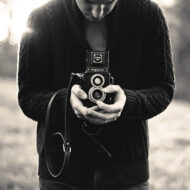How Drawing with a Grid Can Help

Drawing with a grid is nearly as old as time. (Photo Credit: Artist’s Gridded Sketch of Senenmut c.1479 – c.1458 BC Metropolitan Museum of Art)
Drawing with a grid has been around since the time of the ancient Egyptians. Old masters like Albrecht Durer, John Singer Sargent, and Leonardo da Vinci used it. So, there shouldn’t be any shame in using this method. It isn’t cheating. It’s a tool that many, many artists have used, both for accuracy and to enlarge images with greater ease.
What is it?
In a nutshell, it’s a tool. Drawing with a grid involves an original image and two grids. One grid is placed over your original image that you wish to recreate. Another very light grid is drawn on your canvas or paper. If you want to enlarge the image, you’d draw a grid with larger squares. It’s important to keep the same number of squares or you’ll end up with a distorted image. In other words, if your original has a half-inch grid over it with a total of ten half-inch squares across and 10 half-inch squares down (a total size of 5”x5”), but you want to double the size, you’d create your blank grid with one-inch squares. Ten across and ten down.
How does it work?

Art Instruction Schools posted contests in TV Guides, which were basically consisted of drawing with a grid. (Photo Credit: Unknown)
Instead of being overwhelmed with trying to draw the whole entire image, the grid helps you to focus on just one square at a time. The idea is for you to be able to visually judge where in each square part of the image falls or crosses the line. Find that same spot on your blank grid and draw what you see in your original, square for square, matching the position from the original.
Why does it work?
Many artists become overwhelmed with the scope of an entire project with all its multitudes of details. Drawing with a grid, as mentioned above, forces the artist to slow down and focus on one square at a time. In our example above with the half-inch squares, imagine dealing with a half-inch square instead of trying to deal the whole 5”x5” image at once. In addition, imagine not just dealing with that image but also trying to enlarge it and keep proportions accurate. The grid is the perfect tool to help you match everything up.
It also helps with hand-eye coordination. As you work through your drawing, you are training yourself to work a little at a time without the overwhelm, how to judge placement and proportion. I still use the grid method if I decide that proportion or detail is tricky, and I need to make sure I get it down precisely.
How is it not cheating?
The fact is, you’re still drawing your image. You’re just drawing it in smaller sections. The grid is not tracing paper. It is a tool, just like your pencil, eraser, brush and paint. And for those who would insist that it is cheating, da Vinci used grids. I don’t think I know of anyone who would call Leonardo da Vinci or any of the Renaissance masters cheaters, or the ancient Egyptians who used it to create massive images. Do you?
This blog contains Amazon Affiliate links. As an Amazon Associate, I may earn from qualifying purchases.

Recent Comments